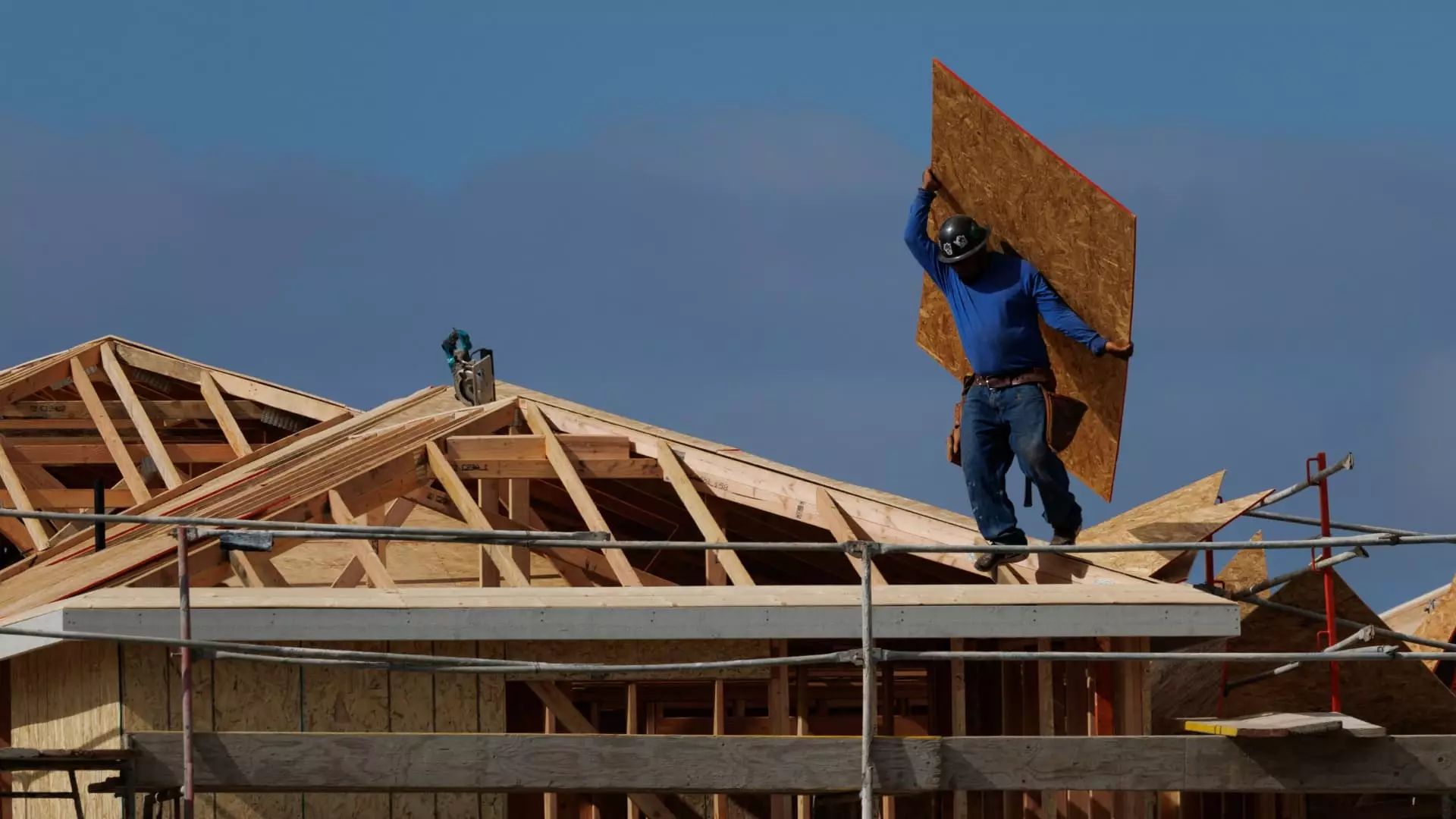Recent reports paint a troubling portrait of the U.S. housing market, revealing a landscape riddled with uncertainty and decline. While the national builders’ confidence has experienced a marginal uptick, this superficial gain masks underlying fragility threatening to destabilize the economy. The NAHB index, a barometer of sentiment, only nudged to a flimsy 33—well below the neutral mark of 50—highlighting that pessimism continues to overshadow optimism. This persistent negativity, stretching over a year and a quarter, underscores a critical reality: the housing sector is faltering at a time when resilient growth should be driving economic progress.
It is vital to recognize that the modest monthly increase—just one point—cannot mask the deeper issues that plague this industry. The slight revival, attributed to recent fiscal policy efforts, offers mere artificial relief rather than genuine growth. The real story is an entrenched decline driven largely by affordability crises, high mortgage rates, and cautious consumer behavior. The fact that builder confidence remains at a historic low indicates that the sector is arguably the canary in the coal mine for broader economic health. When the foundational industry of homebuilding shows such signs of distress, it hints at mounting pressures across various interconnected sectors—finance, employment, and consumer spending.
Pricing Wars and Margins: A Symptom of Economic Strain
One of the more alarming aspects of recent housing data is the surge in price reductions. In July, nearly 40% of builders resorted to cutting prices—an unprecedented level since record-keeping began in 2022. This aggressive pricing strategy, averaging a 5% reduction, suggests an industry desperate to sustain sales amidst waning demand. Such extensive discounts are a double-edged sword: while they may temporarily attract buyers, they erode profit margins and signal a loss of confidence in the market’s strength.
Analysts warn that relentless price cuts could lead to compounded financial strain. Builder margins are already under pressure from efforts to buy down mortgage rates—costly maneuvers intended to make homes more affordable but ultimately dent profitability. If more builders choose outright price reductions over rate buy-downs, the industry might face a cascade of financial difficulties, risking job cuts, reduced investments, and even sectoral contraction. This decline in profitability compounds fears of a housing-led downturn, which could ripple across consumer confidence and economic stability.
The Underlying Crisis: Affordability and Interest Rates
Fundamentally, the housing market’s woes are rooted in a perfect storm of affordability issues and elevated interest rates. Despite some recent fiscal policy tweaks, these measures have failed to buoy the sector significantly. High mortgage rates remain stubbornly close to 7%, pricing out a large segment of potential buyers and dampening overall traffic. The consequence is a contracting market where buyer traffic has hit lows unseen since late 2022, signaling waning demand and shrinking pipeline of new home sales.
Economists warn that unless these structural problems are addressed—through meaningful policy intervention, lower interest rates, or more aggressive affordability measures—the decline in housing starts will persist. Early indicators already suggest a 6% decline in single-family permits for 2025, and reduced builder activity points to a prolonged downturn. The West and South regions, traditionally hotbeds of development, are seeing the sharpest declines, emphasizing the uneven recovery and potential regional disparities in economic resilience.
Ultimately, the housing sector’s struggles serve as a loud warning about deeper economic vulnerabilities. If the industry cannot adapt to this new reality—balancing affordability with profitability—it risks dragging the entire economy into a prolonged period of stagnation. Although recent policy actions provide some hope, they are unlikely to offset the fundamental issues at play. The combination of high interest rates, declining consumer confidence, and relentless price competition suggests that the foundation of the American housing market is shaking—an ominous sign of potential broader financial instability ahead.

